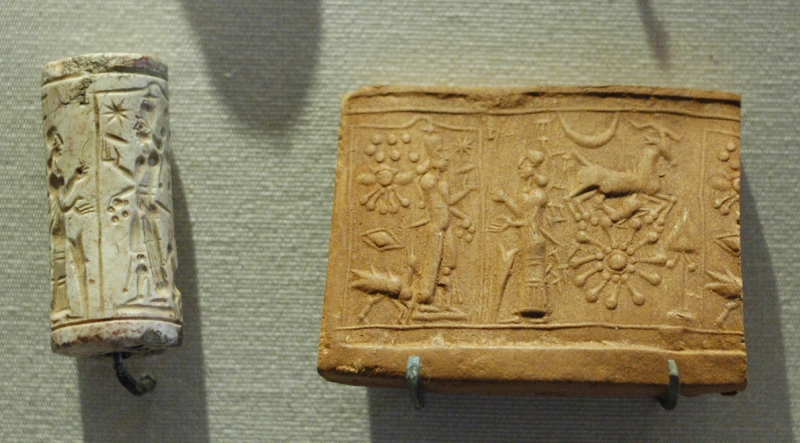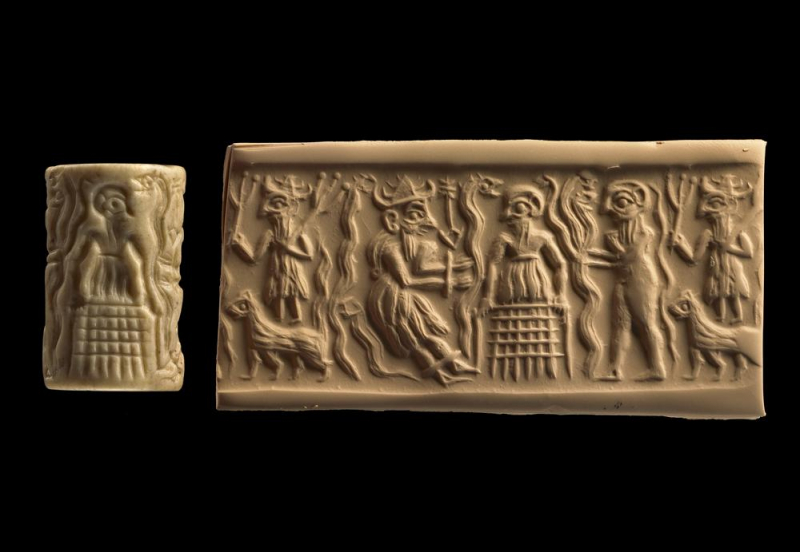Cylinder Seals
One of the inventions and achievements of Mesopotamia is cylinder seals. The Uruk period (ca. 4000 to 3100 BC; sometimes known as the Protoliterate period) in Mesopotamian history lasted from the protohistoric Chalcolithic to the Early Bronze Age, following the Ubaid period and preceding the Jemdet Nasr period. This time, named after the Sumerian metropolis of Uruk, saw the rise of urban life in Mesopotamia and the Sumerian civilization. The late Uruk period (34th to 32nd centuries) relates to the Early Bronze Age and saw the gradual formation of the cuneiform script; it has also been referred to as the "Protoliterate period."
Seals were used to secure stocked or swapped products, to secure storage places, or to identify an administration or merchant. They have been documented from the middle of the seventh millennium BC. Their use spread with the rise of institutions and long-distance trade. Cylinder seals (cylinders etched with a motif that could be rolled over the clay to stamp a symbol in it) were invented and superseded simple seals during the Uruk era. They were used to seal clay envelopes and tablets, as well as to authenticate things and goods because they served as a signature for the person who applied the seal or for the institution that they represented. These cylinder seals would be a defining feature of Near Eastern civilization for millennia. The reasons for their appeal resided in the potential of an image and hence a message with more depth, a narrative structure, and possibly an element of enchantment that they gave.












